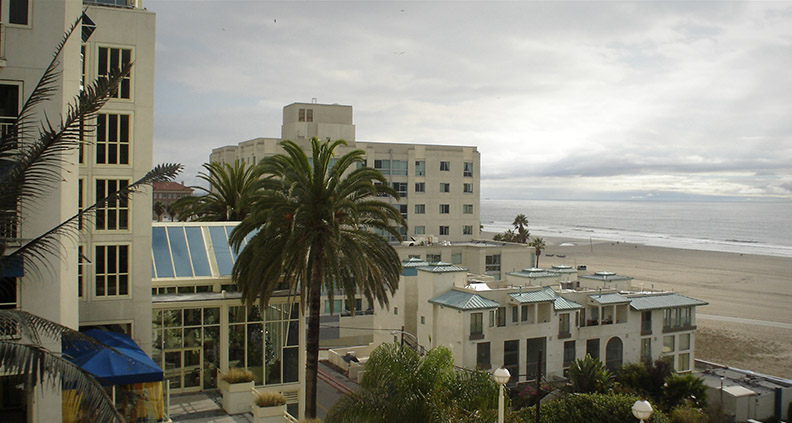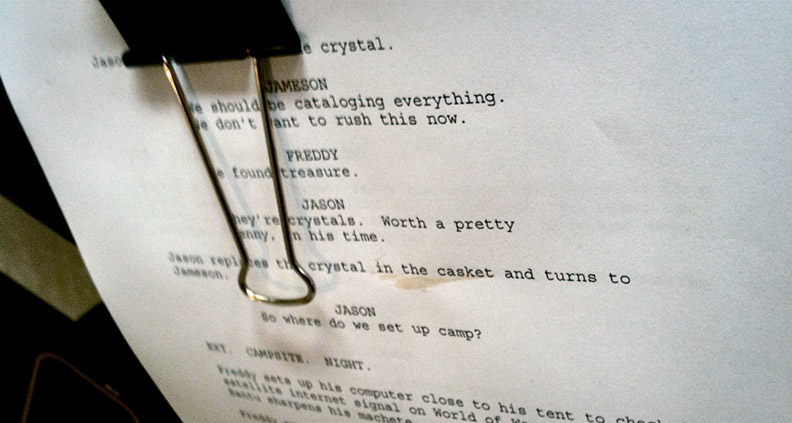How to Work the American Film Market for Fun and Profit
EDITOR’S NOTE: The following blog originally ran on filmindependent.org in 2016. We’re republishing it here, with minor edits to the original text. Special thanks to the author Kimberly Marcela Duron.
HOW TO WORK THE AMERICAN FILM MARKET
The American Film Market is an annual event that takes place over the course of eight days in Santa Monica. Here, over 8,000 industry leaders participate in a whirlwind of deal making, film screenings, seminars and networking events. Attendees including acquisition and development executives, distributors, agents, financiers, film commissioners, writers, directors, producers and more.
As the market is a key opportunity of independent filmmakers globally, Jonathan Wolf, AFM Managing Director and Executive Vice President of the Independent Film & Television Alliance, was gracious enough to stop by Film Independent for a crash course on how to “work” the event and capitalize on its opportunities.

One of the most important things to remember is that the American Film Market is open to everyone, especially those who have a project in the works. The three main groups of attendees can be categorized into buyers, sellers and the production community including people who attend for networking or education purposes. It’s essentially a trade show that occupies the Loews Hotel in Santa Monica, with rooms modified to provide a better deal-making atmosphere. This is because unlike a car trade show, for instance, where cars can be observed on the floor, the product at hand is your film, and should at all costs be watched on a big screen. To that end, theater screening rooms are also available.
Wolf advises filmmakers to bring three-to-five minutes worth of selected scenes that showcase the essence of the story and the film’s production value. Note: a commercial-style trailer wouldn’t do, cautioned Wolf. Commercial trailers are tailored for consumers, not necessarily a sales agent or distributor.

“But I don’t have a finished film yet—how do I find opportunities to get my film made?”
A good question with a good answer. Wolf estimates that each year, $1 billion in deals are made at the AFM. And half of that is for films that haven’t even started shooting. That’s right—the biggest form of sale is the pre-sale, in which the rights to a film are sold before it’s even made. And it’s important to note that films that are less dependent on execution (including genres such as action-adventure, horror and thrillers) have less risk to pre-buy. That witty coming-of-age comedy that sells out theaters at film festival, Wolf says, are generally higher risk because they more dependent on execution. But don’t worry, there are still ways to get that passion project of yours made and sold.

The first seven (of eight steps) Wolf describes in his guide to working the market actually happen before you actually get there. It’s all about doing your homework. Wolf playfully laments how many interns he’s spoken to post-market who have had to deal with situations where a producer was pitching their film to entirely the wrong people.
The first thing you should do is to create a list of companies that best fit with your content, starting with genre. Your homework is then researching the companies’ executives. Who is the head of acquisitions? Who is in charge of development? Etc. The next step is to package your project. Note: two “don’ts” when it comes to pitching are 1) projects without scripts and 2) book options. Your script is your selling point, and it should be the final possible draft. Further, if you only have the rights to a book, the risk we talked about earlier shoots through the roof.
Most companies are not involved in script development. Once you have your script, you can start looking for selling points like genre, one or two known actors, director with a good rep, or even locations where a tax rebate is almost guaranteed. When polishing up your pitch, study and think about the marketplace. Wolf notes that projects like theatrical documentaries don’t get sold as much nowadays, and also that network series are shifting the market in a big way.

Once you’ve done your homework, you’re ready to get to the meetings (which you should have set up beforehand). Here, there are a few last things to remember. First, don’t take a script: it’s too much of a liability and it’s better to have a fully developed one-sheet. Second—and most important—be flexible. There will be bumped meetings and that’s okay. Keep your head up and try to find a way in, maybe through an intern, and maybe requesting a meeting for a later date, or simply a phone number for a call. Ultimately you’re not just looking to sell your film. You’re looking for a partnership. One meeting can lead to an email, which can lead to a phone call, which can lead to more meetings, and then you might find a way in. Flexibility, and patience.
Wolf finished up with one unexpected but fascinating piece of advice. The next time you watch a terrible film and find yourself asking, “how did this ever get made?” pay attention to the credits. Look for all the producers and partners in the film and find out how they really did get the film made. Because whether it was a commercial success or not, or a great film or not… it got made! And you have to hand it to the producers who were able to sell the film and secure thousands of dollars for its production. Now go out there (do your homework) and get that film made!
For more information about upcoming Film Independent events, click here. To learn more about our Film Education programs, click here. The American Film Market is currently underway, November 2-9 in Santa Monica. To learn more, visit their website.
Learn how to become a Member of Film Independent by visiting our website, and click here to subscribe to our YouTube channel.